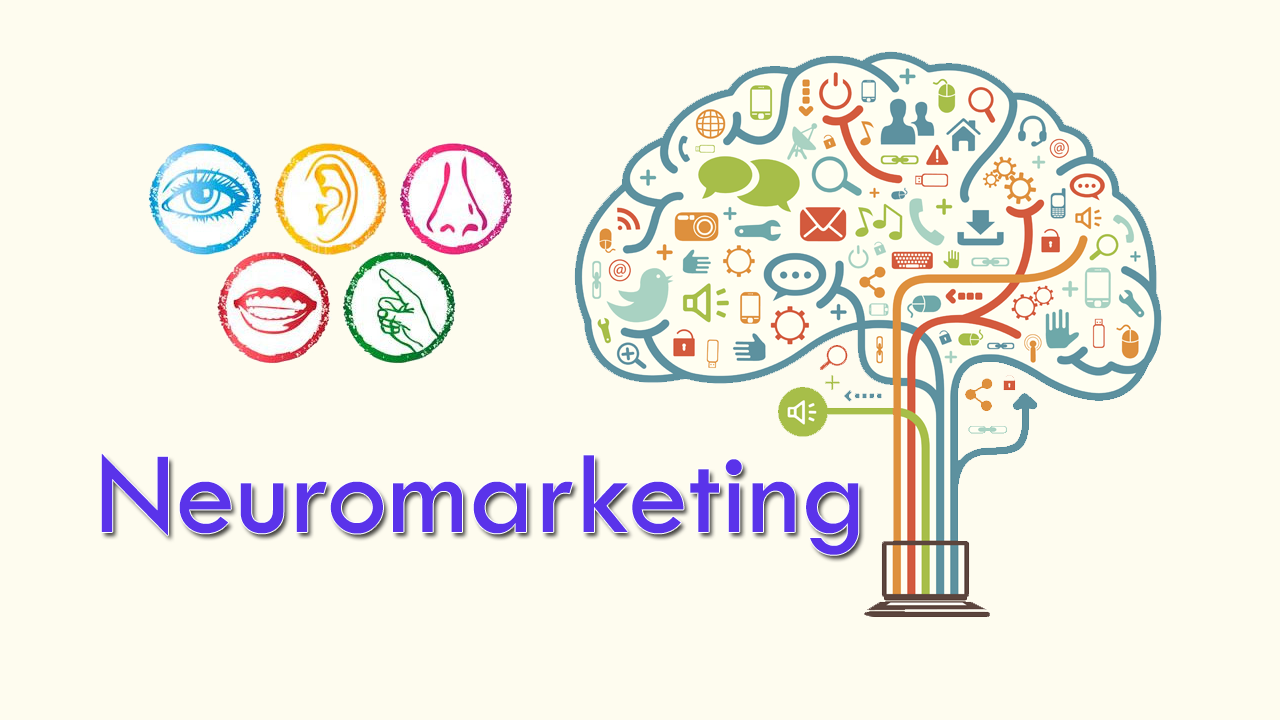During the weekend, I had a chat with a friend and colleague working at another agency, about her starting an online course on NeuroMarketing and the wonderful brave New World that it would create.
I am not a NeuroMarketing Expert – nor is this the place to debate who really is a genuine one. Actually to the best of my knowledge, there is no formal University programme/ degree nor any accredited Professional Certification. Nonetheless, allow me to share my thoughts and experiences with it; for your information, my background includes a healthy experience with applied psychometrics and neuroscience.
FYI, the term NeuroMarketing appeared in 2002 in an announcement of BrightHouse – a US advertising firm, regarding the creation of a new fMRI (functional Magnetic Resonance Imaging) Business Unit for marketing research.
Nowadays is also goes with the name of Consumer Neuroscience.
What is NeuroMarketing?
 “Neuromarketing is a new field of marketing which uses medical technologies such as functional Magnetic Resonance Imaging (fMRI) to study the brain’s responses to marketing stimuli”. (Source: Wikipedia). Allow me please to rephrase this definition in a simpler manner. Neuromarketing is the application of Neuroscience to marketing; Neural Sciences involves not only Neuroscience, but also several areas of applied psychology (persuasive psychology, human perception, etc.).
“Neuromarketing is a new field of marketing which uses medical technologies such as functional Magnetic Resonance Imaging (fMRI) to study the brain’s responses to marketing stimuli”. (Source: Wikipedia). Allow me please to rephrase this definition in a simpler manner. Neuromarketing is the application of Neuroscience to marketing; Neural Sciences involves not only Neuroscience, but also several areas of applied psychology (persuasive psychology, human perception, etc.).
The principles are very old – use MRI to see whether a specific stimulus of our senses (e.g. a video or an image or a sound, or a smell, or even a particular colour), can cause a consistent set of responses to our brain– activity.
Of course, the interest of Neuromarketing is in whether that given response of ours could correlate with a desired consumer- behaviour. The idea then is that the relevant marketing campaign should incorporate that stimulus in the hope of establishing a purchasing behaviour to the consumer. E.g. what is the triggered brain activity/ reaction if I am to use Packaging A or Packaging B for my new product? In practice and in 2018, Neuromarketing uses all sorts of brain imaging, scanning, or any other technology that can measure our various psychometric activities and reactions to any stimuli.
Keep in mind that those measurement-ideas exist as long as EEG devices have been around.
Summarizing, Neuromarkeing is about:
- The brain activities that ‘lead us as consumers to make choices,
- How we make up our minds and how we choose between brands
- How to grab our attentions and possibly our consciousness,
- Our unconscious drivers of our choices as consumers
- Our emotions and feelings as consumers
- Our ability to learn new behaviors as in using new products and services
- The workabouts of our memory regarding its ability to restore longer an ad or a marketing message; plus our ability to recover it/ recall it ‘instantly’
How is this done in practice?
The Interviewee/ ‘Sample Representative Consumer’ basically goes to a Lab and they attach all sorts of electrodes mainly on their head, their hands and possibly in their mouth and they plug them to a computer or some device that can measure brain activity.
Basically, in the past I would have given to you a product to taste and I would have asked you a few questions about your thoughts regarding its flavor, texture etc.… Now the questions are skipped – I will simply attach some electrodes on you and measure your reactions.
FYI: The key Neuromarketing tools include magnetic resonance imaging (MRI), electroencephalography (EEG), eye tracking, and transcranial magnetic stimulation (TMS).
What is really been measured?
- Competitive Engagement
That is about how involved a viewer is, while watching your advertisement and those of your competitors. That is indeed pretty cool and useful information- remember this is an indicative measurement and not absolute data nor validated scientific observation.
What is basically done here, is measuring engagement in real time to see where and how a subject’s engagement rises and falls during an advertisement.
- Visual Attention
For example: Is your product- packaging optimal in capturing consumers’ attention? Will it stand out or ‘fade out’ on a supermarket shelf?
Or: Are your website’s important elements/ information/ sales- offers easy to spot?
- Auditory Attention and its influence on the Visual Attention
E.g. how do you react to the voice or music in a TV commercial?
- Any Gut-feeling responses
Your Consumer- Audience, they already have specific gut-feelings about your product / service and also about your brand. Can a new product / concept shift their perceptions and how?
- Eye- tracking on a video or a website via heatmaps.
How can your business’ advertisement be shortened to ensure the best return on investment?
- All sort of subconscious attitudes
The advertisement may be entertaining / fun to watch, but are your consumers really getting your message?
Maybe it is now the time to produce a new TV commercial because your old one has been played over and over and over again, or is the existing commercial still effective?
- Physiological responses to an advertisement or the tactile experience of touching a product or its packaging or even tasting a new offering.
These are measurements like our heart-rate, our skin- conductance, our facial EMG -that is our facial muscle contractions, etc.….
Who is using Neuromarketing and for what?
Instead of a lengthy answer, the attached table to this article contains a pretty good indication of the types of companies who use NeuroMarketing and what for.
.
So, is Neuromarketing really the answer?
If you want to be critical about it, the real reason behind all that Neuromarketing hype, it is simply because all current / existing market research techniques have proved to be rather inadequate. Thus, the joke: ‘Marketing is about lying to consumers and Market Research is about lying to yourself’.
FYI – Statistically about 60% – 80% of newly launched products or services -even from large multinationals, they fail even though they have been market research tested
.As I mentioned earlier, I come from a psychometrics background. The first and the most basic principle in Psychometric is that no 2 people are similar, implying that:
- you should never average psychometric measurements
- nor does it make sense to use more than 2-3 subjects in any psychometric experiment / observation.
So, since the average human/ the average consumer does not exist, what is the point of these psychometric measurements?
There are 2 more issues relating to rather generic lab observations:
- You can observe the neurosomatic reactions of any great consumer- ‘subject’. But that is by no means a prediction of how this person will react -for example- in a supermarket environment and how s/he makes a decision surrounded by a whole of competing product selections placed not in optimal lighting and surrounded by other distractions.
- Observation of Human Behavior is supposed to be remote and definitely non-intrusive. There is no way that sticking electrodes in someone body or even head or in ‘sticking them’ in an MRI device, that this does not disturb or distract the subjects thoughts, ideas, feelings, etc.
Thus, can such marketing observations ever reflect reality?
In Conclusion
To the best of my knowledge and experience, neither any of the brain- imaging techniques nor the current State- of- the- Art in Neural Sciences are sufficiently advanced to be able to predict/ forecast or manipulate consumer behaviour. On the other hand, the hype is around, so you got some clients and marketers who want to ‘play with the glamorous neurotechnologies and hip neuroscience’. Sure Neuromarketing can be very interesting, but as a tool for consumer behavior-prediction it is still at a very early stage, and quite expensive to use it properly.
Go stand next to an MRI device -there are plenty in Ghana, so you can understand why it is so expensive, slow and hard to use. To me, it is amazing to google and find neuromarketing companies promising the “truth” about what customers “really” think: “we measure what consumers really think and feel, rather than simply what they state,” or “we unlock what your customer really thinks.” Given the current State- of- the- Art of imaging technology, these claims appear genuinely questionable at best, if not 100% erroneous.
Maybe instead of spending money in tricking the consumers by ‘all sorts of marketing techniques’, you should invest in creating products or services of the highest quality. Consumers and their Loyalty, will then follow.
Thank you
Spiros
About the Author:

Spiros Tsaltas –a PR Practitioner & former University Professor, is a PRrincipal at HireLoyalty (www.HireLoyalty.com) , the only Loyalty PR company in West Africa that Consults (How-To) , Measures (Test-To) and Trains (Learn-To) in anything relating to Customer Loyalty and PR. As a NED (Non-Executive Director), Spiros is also associated with HIREghana and he is in the Board of a few Ghanaian SMEs. He welcomes all your comments/ remarks/ feedback /suggestions at Press [at] HireLoyalty.com. HireLoyalty can be reached at +233 20 741 3060 or +233 26 835 2026
© 2018 Spiros Tsaltas and © 2018 HireLoyalty
Other Articles from the same Author
Incubators in Ghana: Spiros Talks to Belinda from FI
Inbound PR: Spiros talks with Iliyana
Customer Loyalty & The Bowman’s Clock




